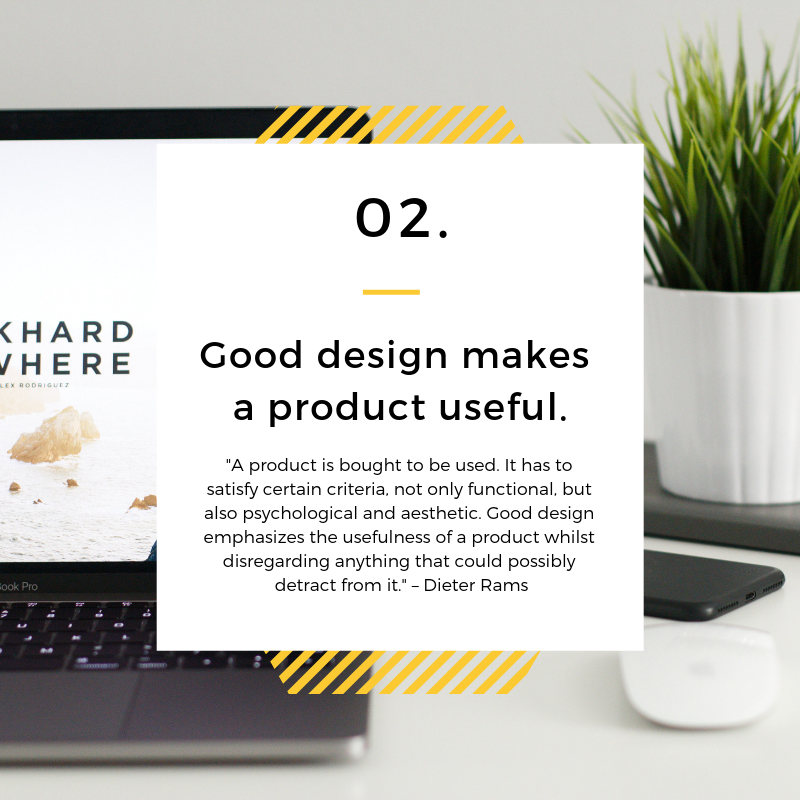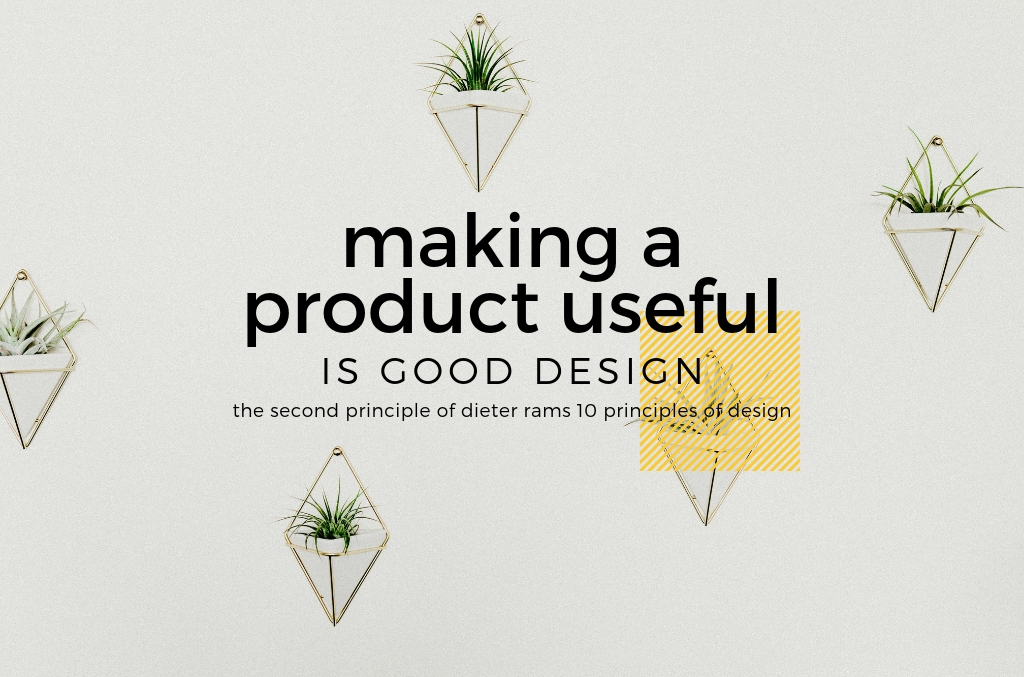We’re continuing our series following the 10 Principles of Design by Dieter Rams. Last post we discussed the first principle: good design is innovative. This principle draws out the importance of our designs being in tandem with technology as it advances. This week we are diving into the second principle: how good designs make our products useful.
In order to make a product useful we must first think about the purpose of what we’re designing. Once we have a full grasp on that, designing can become not only easier but more purposeful as well.
I think so often designers get caught up with the thrills of how catchy something is. I know I’m guilty of this from time-to-time. We’ll put so much of our energy into making sure that something looks really sleek and sexy and totally through functionality out the window. We’ll suddenly find ourselves making the purpose of the design appeal rather what it actually is.

Lets give an example to make this more clear…
So for us our “product” if you will, that you’re buying is a website. Lets say you’re an interior decorator and you’ve decided to hire us to create a website for you. Upon you filling out your content collection form we learn that the main goal of your website is to get people to call you. So now we know the purpose: get your phone ringing! Then our design should be implemented in a way that does just that. If we put all our focus into other elements, like making sure the images have a cool effect every time you hover them, instead of creating clear call to actions, then the website we’re designing you is no longer useful. If we wanted to create a product, a website, that was truly useful for you as this particular customer then we would make sure that the goal of our website (in this case creating CTA’s that get your phone ringing) was accomplished.
Now I don’t think Mr. Rams is encouraging us to not care about color palettes and interesting elements (remember the first principle), I just think he’s encouraging us as designers to beware of straying away from the point of your design.
In the eyes of the consumer, it won’t matter to them how “dope” your design is if they aren’t able to accurately use your product. We could create the sexiest website for this interior decorator, but if people don’t call them then we failed on our end as designers.
Be intentional about the products you’re creating! Design with the purpose in mind of the product you’re bringing to life and you’re much more likely to create something that’s not only beautiful but useful.
Be sure to follow along with our series to learn more about good design. In our next post we’ll be breaking down the third principle by Dieter Rams: good design is aesthetic!




